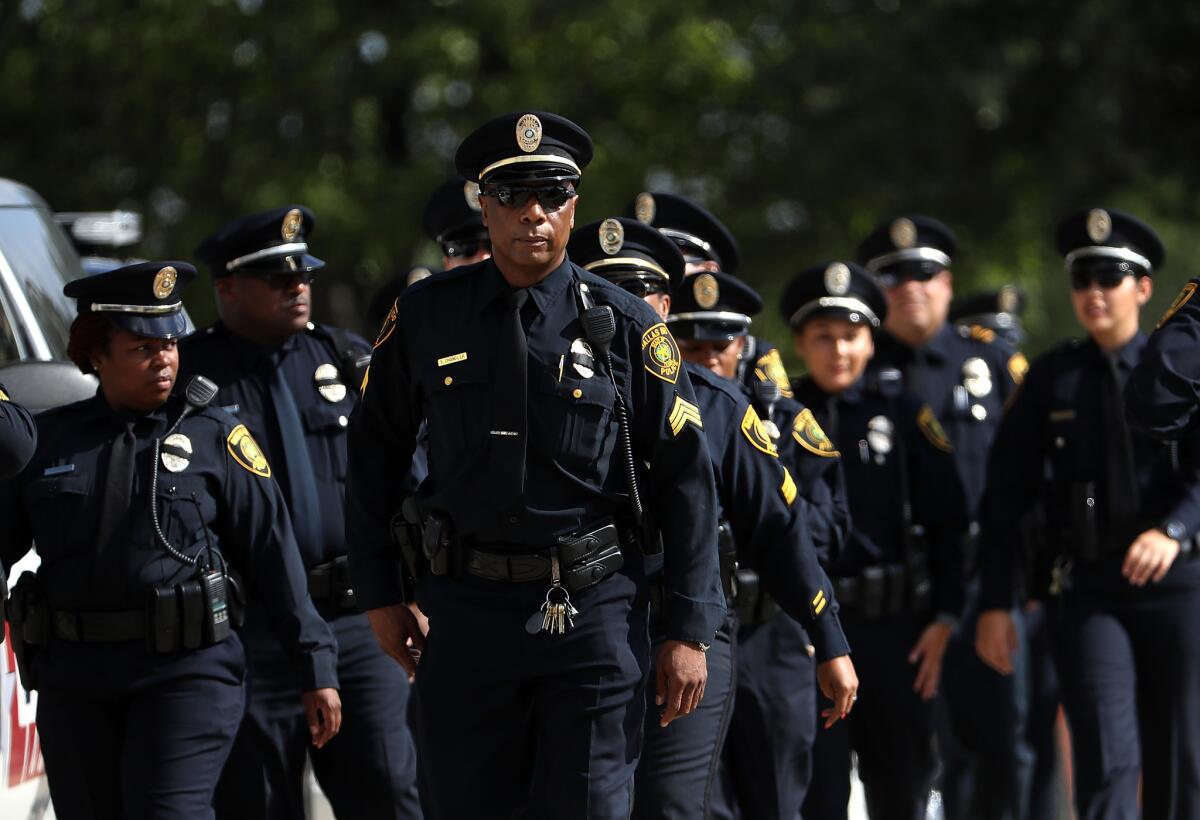Q&A: When are police justified in using deadly force?

- Share via
Deadly force occurs in less than 1% of the millions of encounters police have with people each year. A look at the laws and policies governing when police can use deadly force:
When is force justified?
There are two defining cases. In Tennessee vs. Garner in 1985, the U.S. Supreme Court ruled that an officer cannot use deadly force against a fleeing suspect unless the suspect is a significant threat to the officer or to others.
Four years later, the Supreme Court ruled in Graham vs. Connor that officers who use force must be judged on the totality of circumstances and a standard of “objective reasonableness.”
Force “must be judged from the perspective of a reasonable officer on the scene, rather than with the 20/20 vision of hindsight,” the court said.
What happened in the Graham case?
Dethorne Graham was a diabetic who was experiencing a blood-sugar episode. He asked a friend to drop him off at a store so he could get some orange juice.
When Graham saw the long line, he left behind the juice, ran out of the store and rode away in a car.
An officer saw Graham leave, became suspicious and pulled him over to investigate. Backup officers arrived and handcuffed Graham, ignoring his pleas that he was having a diabetic reaction. During the encounter he suffered multiple injuries.
He was released after the initial officer determined nothing illegal had happened.
Graham sued, claiming the police used excessive force. The court decided against him, saying Graham’s erratic actions justified the officer’s initial suspicion.
See the most-read stories this hour >>
How much force is too much?
Force should be limited to what is needed to make a suspect comply with police instructions, said Darrel Stephens, the Major Cities Chiefs of Police Assn.’s executive director.
“After you gain compliance, it’s inappropriate for you to continue to use force. That’s where, at times, police officers get carried away and go beyond,” he said. “They kick or punch somebody just because of their anger.”
Does a suspect’s possessing a gun justify use of force?
Not necessarily. A gun on a suspect may heighten the officer’s alert for signs the person is reaching for the firearm. Responding to a threat often involves immediate decisions. But the justification for using force depends on the complete circumstances of the situation and the Graham decision’s reasonableness standard.
“The presence of a firearm dramatically changes the use-of-force decision-making,” said Chuck Wexler, the Police Executive Research Forum’s executive director. For police, he said, knowledge of a gun on a suspect takes the situation “from zero to 60 in a split second.”
How do police avoid using force?
More police departments are training officers to defuse situations without using force, said John Bostain, a former officer who provides training to police agencies for the company Command Presence.
Officers are often trained to think that they must act quickly, he said. But Bostain said they should be finding ways to slow things down and consider alternatives.
Better decision-making would lead to fewer situations “often referred to as ‘lawful but awful,’” he said.
MORE NATIONAL NEWS
Once again, President Obama tries to convince America that it is united
More to Read
Sign up for Essential California
The most important California stories and recommendations in your inbox every morning.
You may occasionally receive promotional content from the Los Angeles Times.










